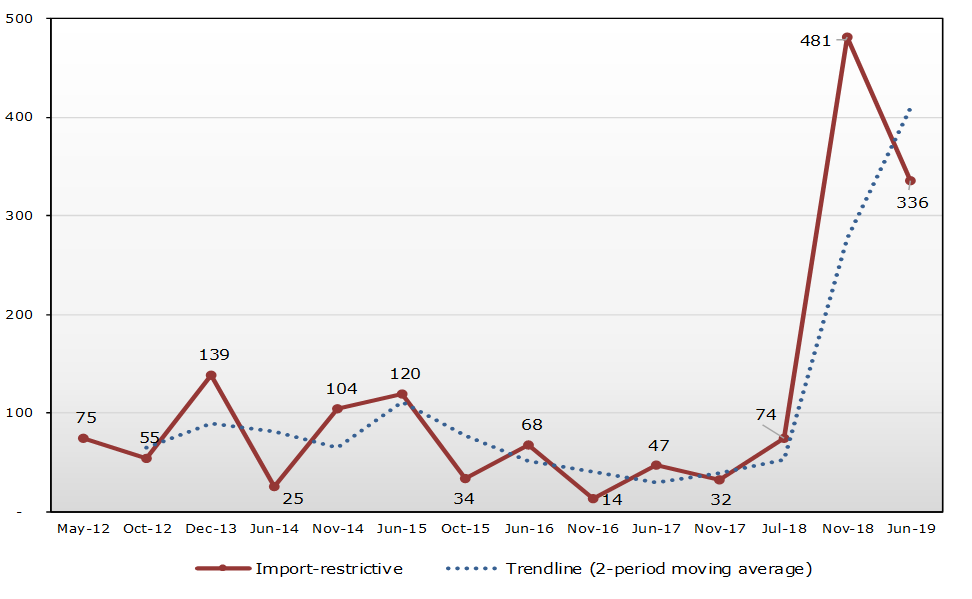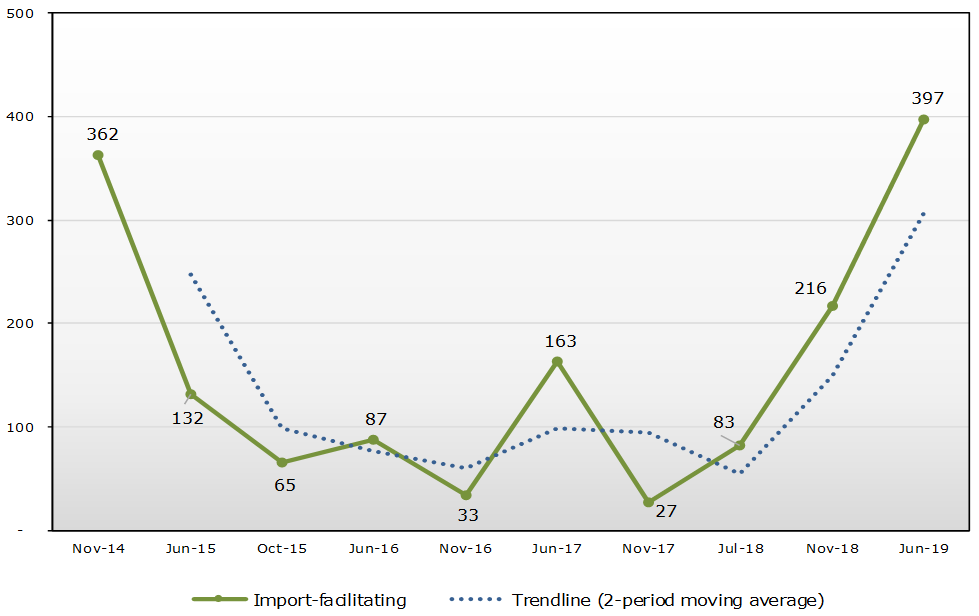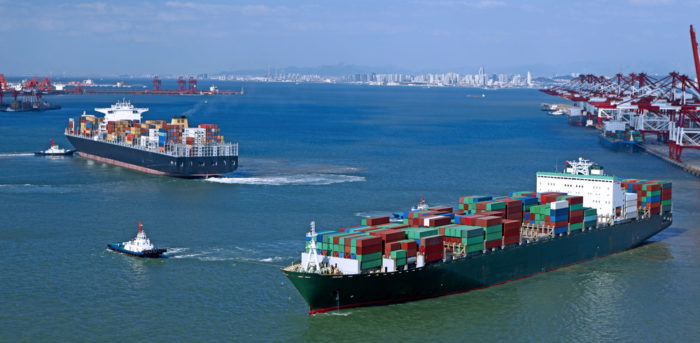The WTO’s 21st Monitoring Report on G20 trade measures shows that the trade coverage of new import-restrictive measures introduced during the period October 2018 – May 2019 was more than 3.5 times the average since May 2012 when the report began including trade coverage figures.
The report discovered that trade coverage of USD 335.9 billion during the period is the second highest figure on record, after the USD 480.9 billion reported in the previous period. These two periods represent a significant spike in the trade coverage of import-restrictive measures, leading WTO Director-General Roberto Azevêdo to urge G20 economies to collaborate to ease trade tensions.
[smlsubform prepend=”GET THE SAFETY4SEA IN YOUR INBOX!” showname=false emailtxt=”” emailholder=”Enter your email address” showsubmit=true submittxt=”Submit” jsthanks=false thankyou=”Thank you for subscribing to our mailing list”]
The Report indicates that turbulence in global trade was still taking place during this period. The previous period achieved a record level of new restrictive measures introduced. The majority of these measures remain in place and have now been added to by several new measures in the current period which are also of a historically high level.
What is more, various significant trade-restrictive measures are being considered for potential later implementation. This further compounds the challenges and uncertainty faced by governments, businesses and consumers in the current global economic environment.
Specifically, G20 economies applied 20 new trade-restrictive measures between mid-October 2018 and mid-May 2019, including tariff increases, import bans and new customs procedures for exports. While less measures were introduced during this review period than in previous periods, the scale of those measures is much increased in terms of their trade coverage and the level of tariffs imposed.

29 new measures aim to facilitate trade, including eliminating or reducing import tariffs, export duties and eliminating or simplifying customs procedures for exports were also applied by G20 economies. The trade coverage of the import-facilitating measures implemented during the review period is estimated at USD 397.2 billion, which is 1.8 times higher than in the previous G20 Report. At four new trade-facilitating measures per month, this is the lowest monthly average registered since 2012.
In addition, for the first time since the start of the trade monitoring exercise, the number of initiations of trade remedy investigations by G20 economies are equivalent to the number of trade remedy actions terminated. Initiations of anti-dumping investigations are still the most frequent trade remedy action, accounting for over three-quarters of all initiations.

In summary, the key findings of the report include the following:
- The Report provides evidence that this turbulence is continuing. The previous period saw a record level of new restrictive measures introduced. Most of these measures remain in place and have now been added to by a series of new measures in the current period which are also of a historically high level;
- The trade coverage of new import-restrictive measures introduced by G20 economies during this period was more than three-and-a-half times the average since May 2012 when the Report started including trade coverage figures;
- The trade coverage of import-restrictive measures during the period is estimated at USD 335.9 billion. This is the second highest figure on record, after the USD 480.9 billion reported in the previous period. Together these two periods represent a dramatic spike in the trade coverage of import-restrictive measures. The stable trend identified up to July 2018 has been replaced with a steep increase in the trade coverage of import-restrictive measures;
- The Report also notes that several significant trade-restrictive measures which fall outside of the review period remain under consultation for potential later implementation. This further compounds the challenges faced by governments, businesses and consumers in the current global economic environment;
- In terms of the number of measures introduced, G20 economies implemented 20 new trade-restrictive measures during the period, including tariff increases, import bans and new customs procedures for exports. While fewer measures were introduced during this review period than in previous periods, the scale of those measures is much increased in terms of their trade coverage and the level of tariffs imposed;
- G20 economies also implemented 29 new measures aimed at facilitating trade, including eliminating or reducing import tariffs, export duties and eliminating or simplifying customs procedures for exports. The trade coverage of the import-facilitating measures implemented during the review period is estimated at USD 397.2 billion, which is 1.8 times higher than in the previous G20 Report;
- The monthly average of 12 initiations of trade remedy actions during the review period is the lowest registered since 2012. The trade coverage of trade remedy initiations (USD 18.4 billion) has fallen compared to the previous period. The trade coverage of trade remedy terminations recorded in the review period (USD 14.6 billion) is two and a half times higher than that reported in the previous G20 Report;
- This Report highlights the continuing challenges in global trade. G20 economies must follow through on their commitment to trade and to the rules-based international trading system and work together urgently to ease trade tensions and to improve and strengthen the WTO.
Explore more information in the PDF below






























































